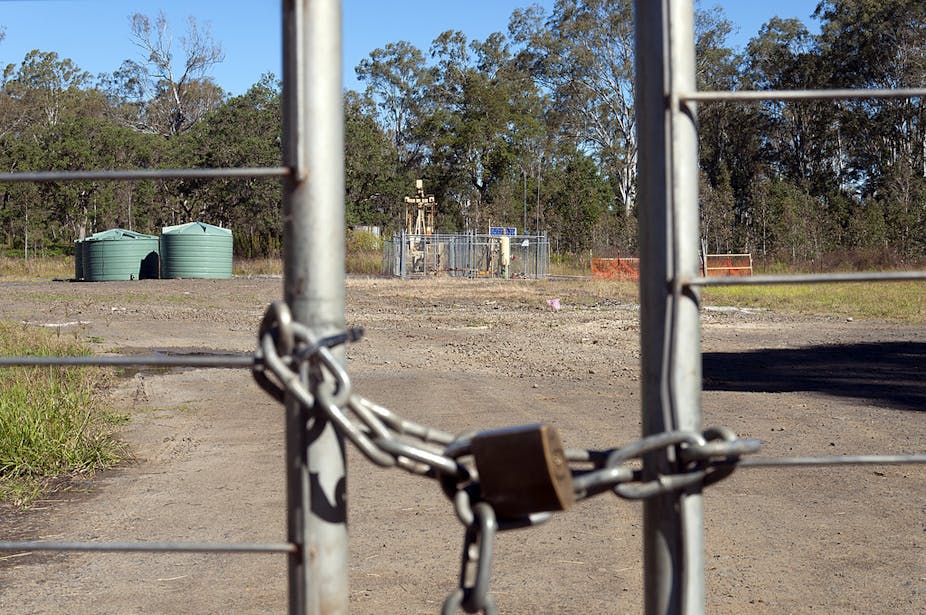Two recent peer reviewed studies on opposite sides of the globe have shed light on how monitoring of earthquakes and determining greenhouse gas emissions from the coal seam gas (CSG) industry may be connected.
Predicting earthquakes has been a major scientific challenge, and so far considered impossible. In a recent case, Italian scientists were jailed for underplaying the likelihood of a major earthquake with the case sending shockwaves through the scientific community.
Could radon be the clue?
Monitoring radon, a radioactive noble gas produced by nearly all soils, may be a promising approach to predicting earthquakes. Sharp changes in radon have been observed before major earth quakes in places such as Japan, northern India, and Slovenia. During the recent earthquake in Italy, unusual radon concentrations prompted a scientist to suggest a massive evacuation of the town of L’Aquila. Unfortunately, the alarm was not raised at the right time and when the earthquake did strike many lives were lost.
The changes in radon concentrations seen before earthquakes are primarily due to the opening and closing of subsurface cracks as pressure builds up and the changing volume of water pore spaces between sediment particles.
Where does gas extraction come in?
While most earthquakes are due to natural movements of the earth’s crust, a recent study from the University of Oklahoma has found that an increase in the occurrence of earthquakes in the US may be attributable to the large scale development of gas fields.
Up until 2000, there was an average of 21 earthquakes a year in the central US. This increased to 50 in 2009, 87 in 2010 and 134 in 2011, including a record 5.7-magnitude earthquake in Oklahoma in 2011. The study suggests a link between the earthquakes and the increasing numbers of disposal wells used to store the wastewater generated by the hydraulic fracturing - or “fracking” - process.
If widespread unconventional gas development potentially leads to an increase in earthquakes, and radon concentrations fluctuate before earthquakes, then radon concentrations may vary near CSG wells.
CSG mining relies on removing large quantities of groundwater from a coal seam to release trapped methane and other gasses and allow them to flow to the surface. In instances where there is not adequate gas flow, hydraulic fracking is used. This relies on pumping water, sand and other chemicals into the well under high pressure to further fracture the substrata to increase gas pathways.
Leaky wells and leaky soils?
In a recent study, our group observed a correlation between the concentration of atmospheric radon and the proximity of CSG wells. Radon concentrations were approximately three times higher in areas with high densities of CSG wells than those areas with low densities. The best explanation for these observations was an enhanced diffusion of gases through the soil near CSG wells. This may be caused by lowered water tables and increased substrata fractures leading to enhanced soil gas exchange as well as leakages from the infrastructure.
While fixing leaks from the infrastructure may be easy, fixing up the soil structure is virtually impossible.
Australia does not have any reliable independent estimates of fugitive emissions for the CSG industry based on experimental data, and diffusive soil emissions only recently received a short mention in a government paper. This research thus may have ramifications for determining the industry’s actual greenhouse gas footprint.
For instance, if methane, which is 100 times more powerful than carbon dioxide as a greenhouse gas, is diffusing though the soil, current methods of estimating fugitive emissions would underestimate greenhouse gas emissions.
If the environment is changing, how will we know?
Monitoring of radon has been done for decades, largely as a health hazard in enclosed spaces such as coal mines and other poorly ventilated underground spaces. However, its use as a valuable environmental tracer is growing.
Radon is an unambiguous tracer and has a simpler chemistry than other gases. In contrast to methane, radon is not affected by complicated biological processes or multiple sources such as livestock, wetlands, and sewage treatment plants. Radon is also easier and cheaper to monitor than methane, allowing a more widespread use in the future.
Are these early studies enough to shake up the coal seam gas industry? Our radon study is the first peer reviewed Australian experiment specifically designed to assess potential influences of CSG into the chemistry of the atmosphere even though the industry has been operating in Australia for over 10 years.
With no independent baseline studies or long term monitoring of Australian CSG fields, the CSG industry may send shockwaves through the environment and no one will ever know.

